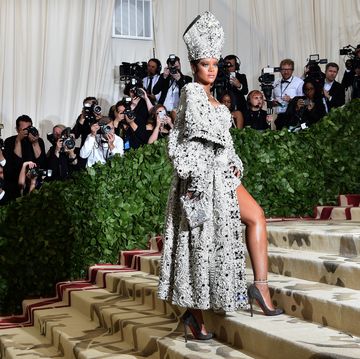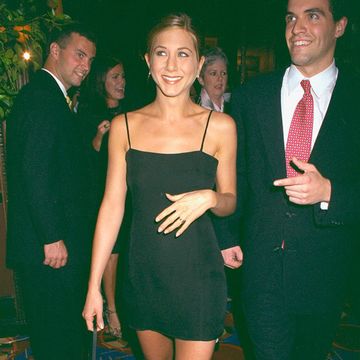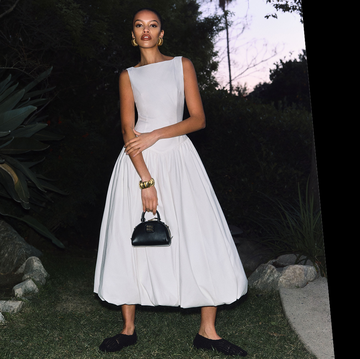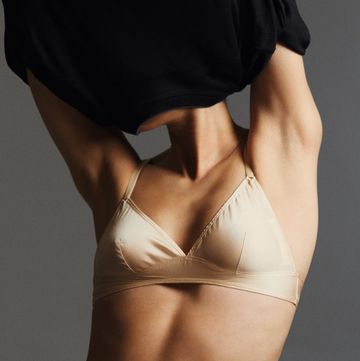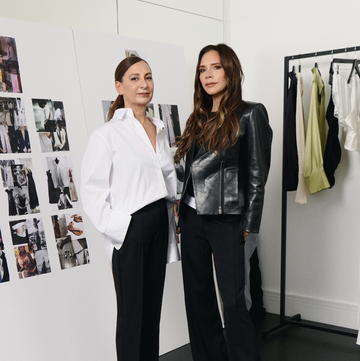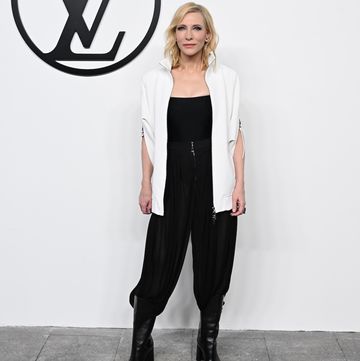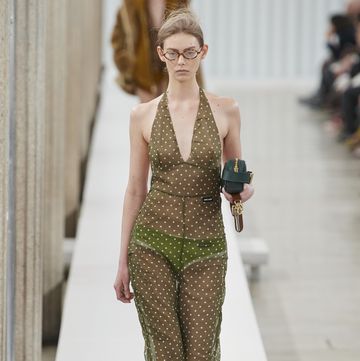Ahead of the launch of the Maison Martin Margiela collaboration with H&M on 15 November yes, the one thats got the fashion press saying it could be the best one yet we revisit the enigmatic designers career and find out what makes the label great. The response on ELLEuk.com to the stories about Margiela for H&M have been overwhelming - the gallery of the full collection being particularly popular. Who knew there was such an appetite for conceptual fashion on the High Street?
In December 2009, it was reported that Margiela had quit the fashion house he built, which sparked a frenzy for his pieces among fashion collectors. No successor has ever been named these days the collections are made by a team of creatives.
Margiela has always been shrouded in mystery: the designer never granted interviews, never bowed at the end of his catwalk shows and was never photographed.
What is known about him is that he graduated from the Royal Academy of Fine Arts in Antwerp in 1980 - which makes him just a teeny bit before the time of the Antwerp Six, a influential group of designers including Walter Van Beirendonck, Ann Demeulemeester and Dries van Noten who followed on his heels by graduating from the same college in 1981.
From 1984 to 1987 he worked for before starting his own label in 1988. According to some accounts, it was working alongside the flamboyant French couturier which gave him the idea to keep his profile a secret at the time JPG was a massive media figure in France which apparently caused problems in promoting his interests in the rarefied world of couture.
In 2002, Margiela's company was sold to Renzo Rosso, the owner of the Italian denim company Diesel Group, which led to expansion with new stores in Paris, Milan and New York.
Marc Jacobs once told WWD, I've never denied how influenced I am by Margiela. I don't hide that... everyone is influenced by Martin Margiela. Anybody who's aware of what life is in a contemporary world is influenced by [such] designers.
His trademarks
Trompe loeil or optical illusion prints. Margiela used blown-up photographs as prints, pre-dating the trend for digital printing by about a decade.
Deconstruction. A technique well known to Margiela fans, with garments featuring seams and visible stitching feature prominently in the H&M collection. The original idea was to make the wearer more conscious about how the garment itself is put together.
Shoulders. Margiela attached great importance (and corresponding padding) to shoulders, whether the whole garment is oversized another trademark or not.
Numerical labels. Each garment is labelled not with a name but a number. Margiela devised this labelling system very early on in the life of his brand.
Sparkle and shine. The mirrorball leggings in the H&M collection, as well as the sparkly necklace and accessories, are references to Margielas metallic pieces and his autumn/winter 2000 disco ball earrings. The designer loved to make fashion out of unexpected items.

